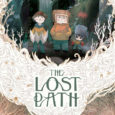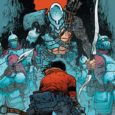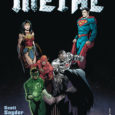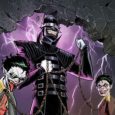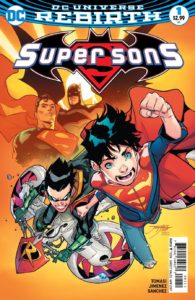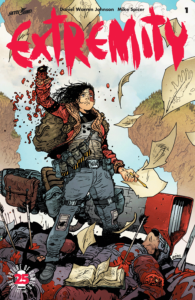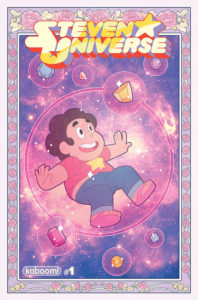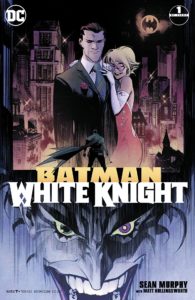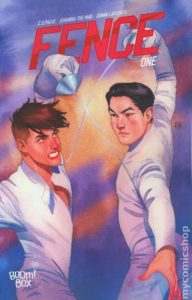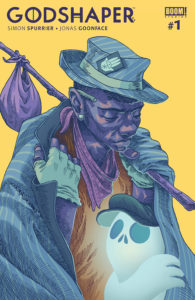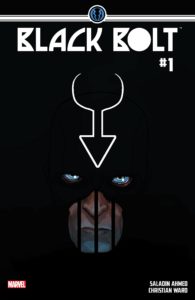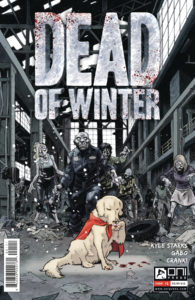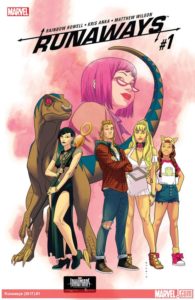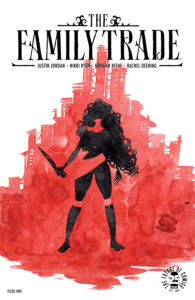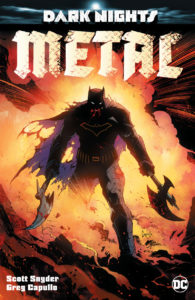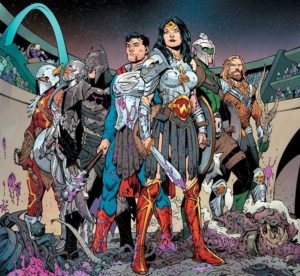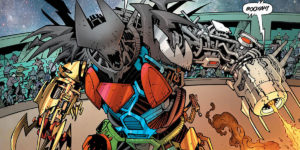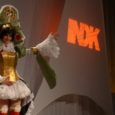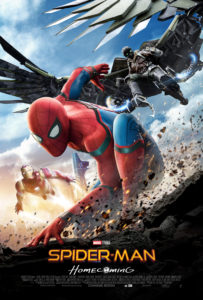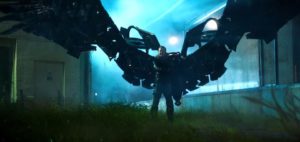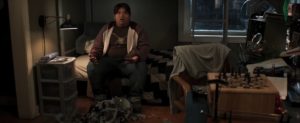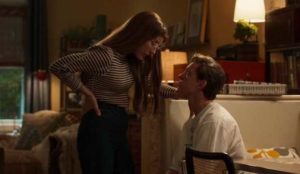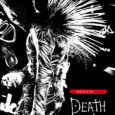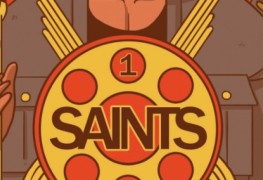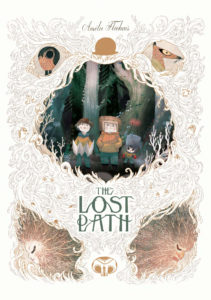 Adventure stories for children starring children will never go out of style. From Alice’s Adventures in Wonderland to The Neverending Story to Goonies, there’s a great thrill in young ones being able to see themselves as the protagonists in exciting situations. The Lost Path by Amélie Fléchais is one such tale in which a trio of boys find themselves in the thick of a secret world of strange and wondrous creatures, but how does it measure up to some of the classics?
Adventure stories for children starring children will never go out of style. From Alice’s Adventures in Wonderland to The Neverending Story to Goonies, there’s a great thrill in young ones being able to see themselves as the protagonists in exciting situations. The Lost Path by Amélie Fléchais is one such tale in which a trio of boys find themselves in the thick of a secret world of strange and wondrous creatures, but how does it measure up to some of the classics?
With some writing help by Jonathan Garnier, The Lost Path is written and illustrated by Fléchais. The book opens with a fairy tale of an older couple whose spirits are trapped by the forest before it quickly transitions to boys playing a scavenger hunt in the forest. They get lost and as the night grows darker, they find their situation growing stranger as they move deeper into the forest.
The story itself feels heavily influenced by Where the Wild Things Are, a notion that is supported by the Maurice Sendak quote that proceeds the book. The boys interact with the creatures, not understanding the world that they’ve arrived in, and with no understanding of the dangers they face. In addition to this, I find a lot of influence from Alice’s Adventures in Wonderland in the way the plot revolves around the forest guardian and the quest for the crown. Both of these are ideal stories to draw inspiration from for a children’s book of these sorts as they are seminal classics, but I don’t think Fléchais really handled the interpretation of the themes properly.
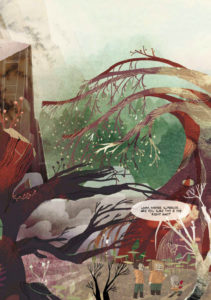 The problem with the story is that the boys don’t do anything. They’re simply reacting to everything that happens around them. They don’t learn any lessons, they don’t affect the world in any way. Their only purpose is to witness the events and they, and by extension the reader, don’t get the chance to see anything through to the conclusion. That’s one of the major shortcomings of the book, in that the story doesn’t really matter. (We don’t even discover the outcome of the scavenger hunt.)
The problem with the story is that the boys don’t do anything. They’re simply reacting to everything that happens around them. They don’t learn any lessons, they don’t affect the world in any way. Their only purpose is to witness the events and they, and by extension the reader, don’t get the chance to see anything through to the conclusion. That’s one of the major shortcomings of the book, in that the story doesn’t really matter. (We don’t even discover the outcome of the scavenger hunt.)
One of the things that turned me off most about The Lost Path was its abrupt ending. While the kids’ journey is an interesting one, the characters they meet are far more intriguing, but Fléchais never dives into any of them. I wanted to learn more about the fox and his supersonic bike, or the moose and how he got the bowler hat, or even what the deal was with the hat. Unfortunately, all of these characters are just incidental, there to give the boys a sense of wonder. Since the story is told from the perspective of the boys, once they are out of the woods, we lose all connection to these strange and wondrous creatures. Their tales are never finished and that’s just a shame.
The book’s art is breathtaking. The illustrations by Fléchais are magnificent and really bring her world and characters to life. Her style suits the creatures she’s created and I love the spin she gives the look of the humans. Each of the boys is unique and easily decipherable at a glance. I also loved the sparse use of color in the book. Most of the pages are black and white, rendered in great detail, but every so often readers are treated to a page of full, vibrant color, which makes the scene more dramatic when juxtaposed against the monochrome panels.
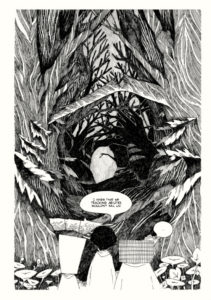 The art also does a great job of slowing down the reader. The Lost Path has a very fast paced story, with so much happening in so few pages that it’s easy to breeze through the whole thing, but the highly detailed art forced me to pause and pour over the details in the minutiae on page, which helped me to digest the story better.
The art also does a great job of slowing down the reader. The Lost Path has a very fast paced story, with so much happening in so few pages that it’s easy to breeze through the whole thing, but the highly detailed art forced me to pause and pour over the details in the minutiae on page, which helped me to digest the story better.
The Lost Path is beautiful visually but doesn’t pack much originality. I would have preferred to spend more time with the Guardian, learning about her kingdom, or some of the animals in the forest. It was slightly disappointing that Fléchais gleaned over all of these interesting situations and themes, instead focusing on the boys finding their way home. I understand her decision, though, as this story felt aimed for children. All in all, it’s a good story for those who are interested in child adventure stories but doesn’t offer much depth.
Grade: B-
The comics industry went through a lot of growth in 2017, some of it good and some of it bad. Through shifts in-universe, massive story events such as Marvel’s Generations and Legacy initiatives to DC’s Doomsday Clock, and questionable PR decisions from most of the big publishers, comics as a whole seemed kind of shaky.
Luckily, the year also saw a bevy of new and old voices, many of whom find themselves on our list of top comics of 2017. We left off ongoing series and chose to focus on new stories and creative teams, all of which you can find at your local comic store! In no particular order, here are our top 10 comics of 2017!
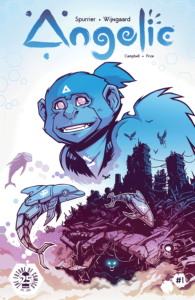 Angelic
Angelic
Art: Caspar Wijngaard
Super Sons
Extremity
Story/Art: Daniel Warren Johnson
Extremity is so damn special. Most issues leave me in my feelings, or swearing while holding my head in my hands, but it’s definitely one you MUST pick up. It’s Mad Max Fury Road meets Avatar the Last Airbender. It’s kinetic and brutal. I actually don’t want to say too much about it because it’s that good and I don’t want a single bit spoiled for you. Bonus: it’s only $10 for the first trade!
Steven Universe
Story: Melanie Gillman
Art: Katy Farina
Fans of the Cartoon Network show, rejoice! This ongoing series perfectly captures the voices of the characters and it’s episodic, meaning you can pick up any single issue off the shelf and have a complete standalone story. It’s great for little ones who may want to get into comics and hardcore show enthusiasts as well. There’s currently one collected softcover out too, just in case that’s your preference!
Batman: White Knight
Art/Story: Sean Gordon Murphy
Yes, I know a lot of you are tired of rehashed Batman stories featuring the same old formula of Batman beating up the bad guy and saving the city of Gotham. HOWEVER, the Batman: White Knight mini-series turns it all on its head in a refreshing, dark way. The series is about halfway through, but it makes a very big impression every issue. Be sure to pay close attention to those busier panels; Murphy tucks details in every corner. Issue #1 may be a little elusive to track down if you’re intent on a first printing, but it will definitely stay on your mind for a while after reading it.
Fence
Story: C.S. Pacat
Art: Johanna the Mad
If you need something to fill the Yuri!!! on Ice shaped hole in your heart, I can’t suggest Fence fast enough. As you may be able to infer, Fence is about a group of young fencers in a private school. There’s definitely going to be some drama, and there’s definitely going to be some romance. Granted, I have some bias as I love stories about tension filled high school slice of life experiences and I have a soft spot for fencing itself, so this was up my alley. Either way, if you enjoy attitude filled boys fighting with swords, check it out!
Godshaper
Story: Simon Spurrier
Art: Jonas Goonface
This was probably my favorite book out of 2017, if I had to choose one from this list. It’s also one of the hardest to try to summarize. In this universe, every person has a god assigned to them, usually bestowing some sort of skill or power. The story centers around Ennay, a queer “shaper” – which is to say, they change the shape of a person’s god. Those without a god are pariahs, like Ennay. It’s a fresh take and beautiful in every way.
Black Bolt
Story: Saladin Ahmed
Art: Christian Ward
This is another title where I have some bias, as I am a hardcore Inhumans fan. That aside, holy crow, please pick up a copy just to look at the art by Christian Ward. The man is a master as space psychedelics and his style is a pretty perfect complement to Saladin’s storytelling. Because Black Bolt can decimate everything ever if he so much as whispers, the dialogue can be a little light, but a glance into the inner workings of the Silent King is always pretty bomb.
Dead of Winter
Story:Kyle Starks
Art: Gabo
Dead of Winter is a popular survival horror board game where you have to complete scenarios and make tough decisions as randomized characters with different abilities. The comic it is based on takes these characters and runs with them in a free-for-all hilarious look at the end of the world. It’s a 4-issue series of pure fun, but I definitely think you’ll enjoy it more if you’ve played the board game! I almost always draw Sparky, a golden retriever who can withstand zombie bites, and there’s plenty of Sparky in this series, thankfully.
Runaways
I’ve missed The Runaways and they’re back in a perfect return of my favorite Marvel teenagers. While I wouldn’t start with this series because spoilers for the television show, I would suggest definitely, DEFINITELY, picking up the 2004 Brian K. Vaughan series first and going from there! Expect some angst because it picks up immediately where we last saw everyone. The creative team perfectly captures every single character and all their hang ups. Hmm, as I reach the end of this list, I realized most of these have some personal bias, but YOU KNOW WHAT, I READ A LOT OF COMICS AND I HAVE A LOT OF FEELINGS ABOUT THEM AND LIKE, 94 OF THEM ARE ABOUT THE GODDAMNED RUNAWAYS.
HONORABLE MENTION: The Family Trade
This is going to be a slow, delicious burn and I know those aren’t for everyone. That’s the only reason it didn’t make my top 10 list, but if you find yourself with a couple extra bucks, definitely pick up a really neat story about a family of assassins, particularly one clumsy one who finds herself in quite the pickle.
That wraps up my list, and it’s pretty varied if I do say so myself. I hope you find a couple of new favorites among them and feel free to tweet my way to discuss them (except Runaways cause inevitably I will CRY and that’s no fun for anyone!). Be sure to check out our other comics reviews and lists!
Given the size, popularity and market share Funko currently enjoys, it’s no surprise that their booth at San Diego Comic Con is one of the most anticipated. They will be offering a metric buttload of exclusives (all of which you can find here), and that’s on top of the Pop-Up Shop they’re hosting outside of the convention in San Diego (news of which you can read about here).
Well before the wide release of Spider-Man: Homecoming, early preview reviews started rolling out and proclaiming the film to be fantastic. I was a little worried that much of the hype was overblown; that the reviewers were overlooking the movie’s flaws just because they were happy to have Spider-Man as part of the Marvel Cinematic Universe. Granted, I had no reason to feel this way having not seen the movie, but that’s just the anxiety in me. After seeing Spider-Man: Homecoming, however, I realize just how silly this notion was.
For starters, Homecoming doesn’t get bogged down in an origin story. One of movie-goers’ biggest complaints is that the first film in every super hero series is an origin. Most often, it’s necessary to establish where the character comes from. Sometimes, a movie is directed well enough that the audience doesn’t realize they’re watching an origin. For Spider-Man: Homecoming, there’s a quick scene recapping Peter Parker’s (Tom Holland) experiences in Berlin prior to his debut in Captain America: Civil War and how Tony Stark (do I even need to put “Robert Downey Jr.” here?) gave him his suit but that’s it. They make references to the spider that bit him but we never see it happen. Thankfully Marvel and Sony understood that audiences know how Peter became Spider-Man.
As a character, Spider-Man has always been about dichotomy, and Homecoming recognized that. Peter Parker is the timid, nerdy, powerless kid but he’s also the strong super hero who can do amazing things. In the movie, though, we see this power divide almost everywhere. Spider-Man wants t do more and help people on a grander scale but Tony Stark limits his abilities and keeps him grounded. Adrian Toomes, the villainous Vulture played by Michael Keaton, is a hard-working, blue-collar salvage worker whose life is threatened when a powerful government organization comes in and claims authority over his jobsite. We can understand his fear and need to do whatever he has to in order to provide for his family. (This was also a nice way to tie Homecoming into the MCU and the events that transpired in Avengers.)
Spider-Man: Homecoming also places a lot of focus on Spidey’s supporting characters. Peter’s best friend, Ned (played by Jacob Batalon, who looks more like Ganke than Ned Leeds but I digress), gets almost as much screen time as Peter himself. School bully Flash Thompson (Tony Revolori) shows up often and is much more than a one-note trick than previous portrayed in the other movies. Even a character like Michelle has an abundance of screen time, but that’s to be expected when they put someone like Zendaya in that role.
All of this works to make Spider-Man: Homecoming feel like a true Spider-Man movie. Spider-Man has always been about the people around him. Seventy plus years of comics show us that Spider-Man became the hero he is because of his affection for his friends, and even his tormentors. Previous cinematic versions of Spidey never really got that ideal, or at least never expressed it as well as Homecoming did.
One of my biggest complaints about Homecoming is the way it handled Peter Parker. As the quiet, nerdy kid, Peter either gets picked on or ignored. He lives with his elderly Aunt May, who no doubt maintains her household while living on a fixed income. Peter feels that financial crisis and decides to help carry the burden. However, in Homecoming, Peter isn’t like that. Sure, he gets picked on by Flash Thompson, but overall he has a few close friendships. His peers find value in his intelligence and every time they’re disappointed by him it’s through his own actions. Even Aunt May (Marisa Tomei) is younger and prettier than her other incarnations (which the movie doesn’t hesitate to joke about), which allows her to continue to provide for herself and her teenage nephew. Peter’s life in Homecoming isn’t that bad.
Being Spider-Man, however, sure as hell seems like it. Homecoming manages to show audiences just how much it sucks to be Spider-Man. He gets yelled at by the public for making mistakes. His actions cause massive damage to the neighborhood he lives in. He puts his life on the line to take down a threat when no one else will listen to him. Why?
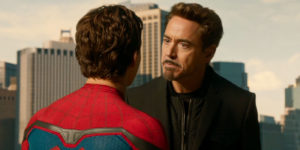 Clearly because “with great power comes great responsibility.” The beauty of Spider-Man: Homecoming is that we have a Spider-Man who understands Uncle Ben’s powerful message without having to beat audiences over the head with the phrase. Not once are those words uttered, but we see how much Peter values them. This all goes back to the lack of an origin story. Spider-Man knows when it’s time to do the right thing; whether it’s from the life lesson he learned off-screen from his Uncle Ben or from being mentored by Iron Man himself is irrelevant. It’s a notion that’s inherent in this version of Spider-Man.
Clearly because “with great power comes great responsibility.” The beauty of Spider-Man: Homecoming is that we have a Spider-Man who understands Uncle Ben’s powerful message without having to beat audiences over the head with the phrase. Not once are those words uttered, but we see how much Peter values them. This all goes back to the lack of an origin story. Spider-Man knows when it’s time to do the right thing; whether it’s from the life lesson he learned off-screen from his Uncle Ben or from being mentored by Iron Man himself is irrelevant. It’s a notion that’s inherent in this version of Spider-Man.
There’s lots of things to enjoy about Spider-Man: Homecoming; all of the excellent performances of the cast, most notably by Holland and Keaton, the return of Jon Favreau as Happy Hogan in a true supporting role, and all of the small throwbacks and references the filmmakers added. Overall, what I liked about Homecoming is that this is the closest a movie version of Spider-Man has ever gotten to its comic book roots. The young Peter Parker/Spider-Man has a lot to learn, not just about being a hero but about life in general. They’re not fast forwarding through his growth but allowing audiences to experience it first-hand, which is the most exciting part of the story.
Grade: A




